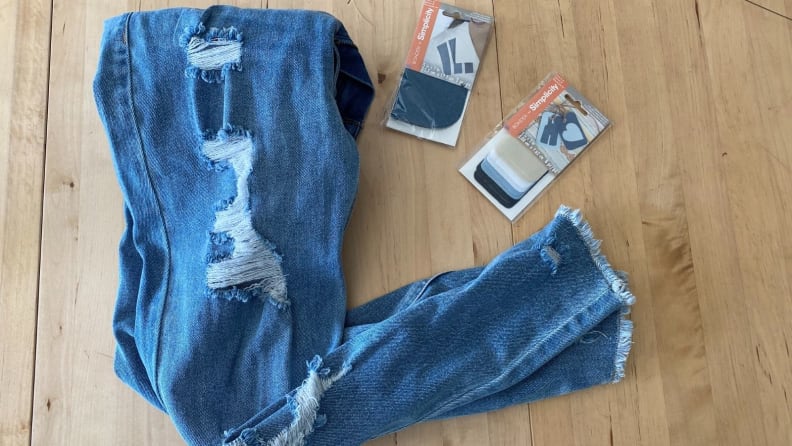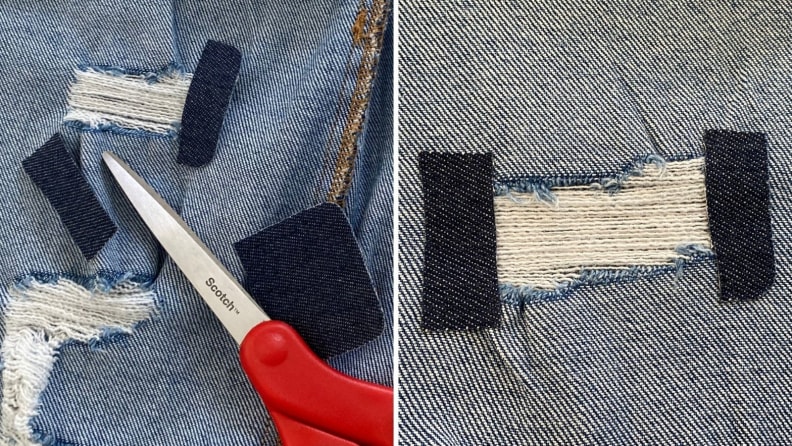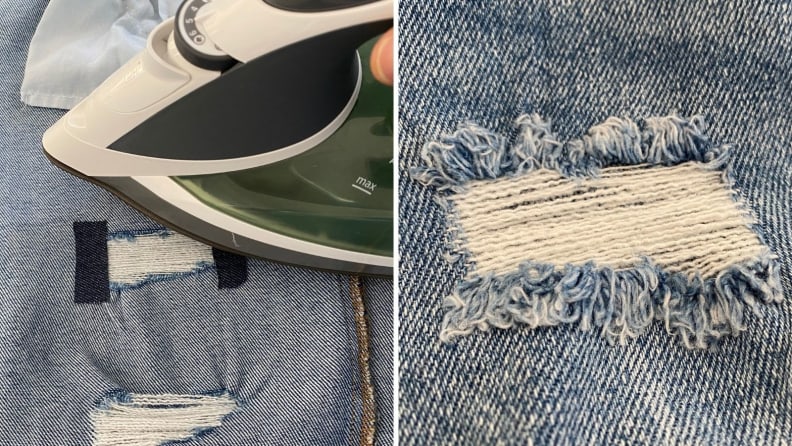How to fix ripped jeans so they last longer
Every time ripped jeans come back into fashion, parents everywhere collectively wonder, “You paid for clothes with holes already in them?” But in reality, the purposely ripped look never goes out of style, whether popping up on runways at Milan Fashion Week 2022 or at mainstream brands such as American Eagle and Madewell.
But, as anyone who’s ever sported pants with pre-tattered knees knows, ripped denim doesn’t last as long as its unripped counterparts. If you accidentally (and inevitably) get your foot stuck in the holes while slipping on your pants, you’ll end up with more frayed, dangling threads than is fashionable, plus an even more gaping hole. So, how can you keep your ripped jeans from, er, ripping more? We hunted down and tried this ingenious—or should we say injeanius—hack to make distressed denim last longer.
What’s the best solution to reinforce the holes in jeans?

Credit: Reviewed / Hannah Southwick
You don’t need many materials to pull off this simple fix for keeping jeans’ holes from getting larger.
Many online sources recommended using iron-on patches applied to the inside, so the hole will be less likely to rip if it catches on something. While the patches themselves won’t be visible while you’re wearing the jeans, ones made of denim are a great choice as they blend in with the pants themselves.
I used the Bondex Fabric 2-inch by 3-inch iron-on patches—which come in a pack with white, khaki, and dark denim options—but you can use any patch as long as it can be cut into strips long enough to cover the edges of the rip.
How to apply the iron-on patches

Credit: Reviewed / Hannah Southwick
Adhere the patch strips on the outer edges of the rip.
All you’ll need is a pair of scissors, the patches, your jeans, and an iron and ironing board. First, cut the patch into thin strips slightly longer than each of the edges of the hole or rip you’re reinforcing. Next, place the strips inside the jeans along each of those edges—perpendicular to the white threads going across the hole—such that a bit of patch extends past the top and bottom of the hole. This way, your jeans will still look distressed from the outside but the intentional damage won’t get unintentionally any worse.
Adhere the patch pieces following the guidelines for your specific patch (for the Bondex Fabric one, that means you’ll iron for one minute on both sides of the jeans). Some suggest using a hair straightener in place of an iron, which can work in a pinch but you may end up with adhesive on the hair appliance’s plates if you go that route.
Do the iron-on patches work?

Credit: Reviewed / Hannah Southwick
Thanks to the patches, my jeans are less vulnerable to further tearing.
In my experience, yes. To test the patches’ effectiveness, I tried this strategy on one hole in my jeans but not the others. When I tugged at the non-reinforced rips, several white threads snapped, whereas the ones treated with the patch stayed in place. As an added benefit, the white elastics on the reinforced rip laid flatter than the non-reinforced ones.
The product experts at Reviewed have all your shopping needs covered. Follow Reviewed on Facebook, Twitter, Instagram, TikTok, or Flipboard for the latest deals, product reviews, and more.
Prices were accurate at the time this article was published but may change over time.
